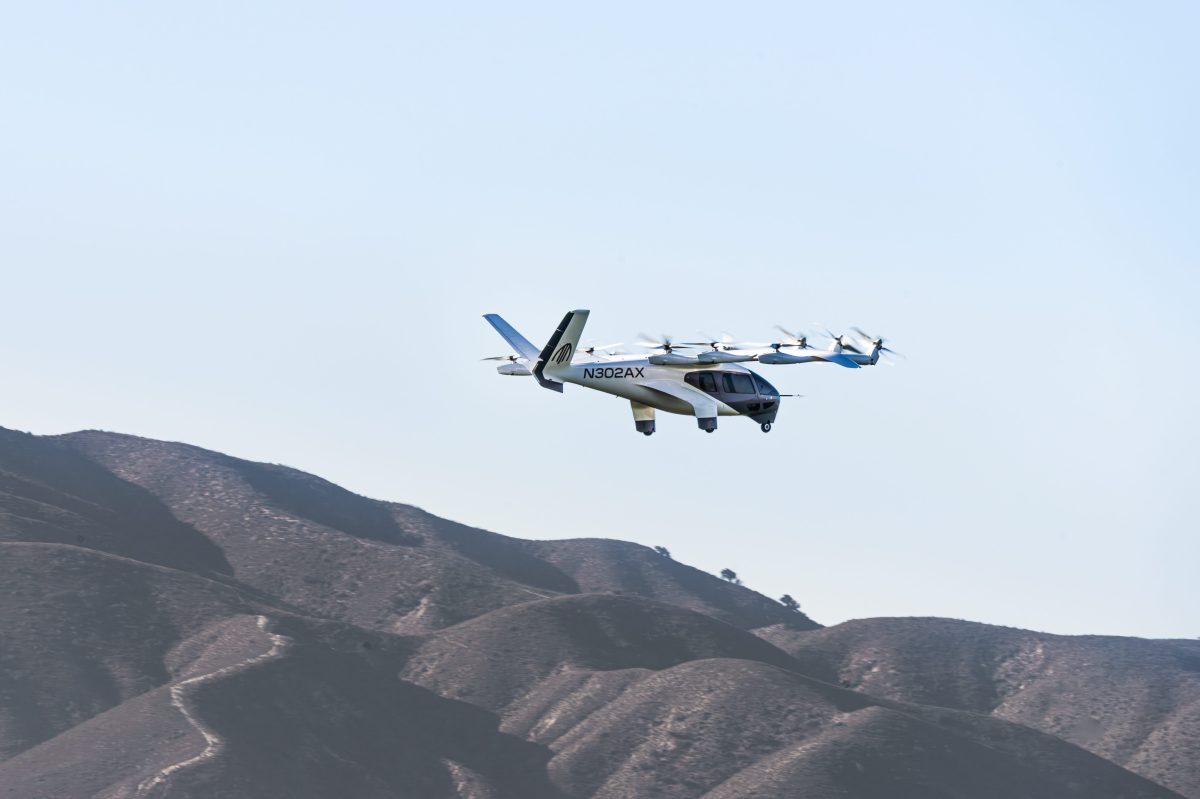Airport Secrets From an Architect Who Designs Them
Skift Take
 Editor's note: This series, called Airline Insiders, introduces readers to behind-the-scenes decision-makers for airlines. Unlike our ongoing airline CEO series, Future of the Passenger Experience, we will not question the highest-ranking executives here. Instead, we will speak with insiders who guide decisions on airline operations, networks, marketing, and the passenger experience.
Editor's note: This series, called Airline Insiders, introduces readers to behind-the-scenes decision-makers for airlines. Unlike our ongoing airline CEO series, Future of the Passenger Experience, we will not question the highest-ranking executives here. Instead, we will speak with insiders who guide decisions on airline operations, networks, marketing, and the passenger experience.
Today, in the sixth installment of the series, we speak to an architect who has designed terminals at many of the world's largest airports.
You can read all the stories in the series here.
Years ago, when Pat Askew was in his mid-20s working for an architectural firm in St. Louis, his boss couldn't go to a meeting at St. Louis Lambert International Airport to discuss how to improve it.
He said, "Would you mind sitting in for me at this meeting?," Askew remembered. "It won't be much at all. Just sit and listen, and take notes, and behave."
At the time, Askew had never been on a commercial airliner. But after the meeting with representatives from more than a dozen airlines, including St. Louis behemoth TWA, Askew said he was hooked. He wanted to be a terminal planner, and his colleagues and airline executives helped him make it happen.
"I fell into it, and I haven't regretted a minute," he said. "Most fascinating thing I could've imagined."
For more than 25 years, Askew has had top roles at many of the major airport architectural firms, including HOK, Gensler, and Perkins+Will. In January 2017, he joined HKS, where he is leader of its aviation architectural and interiors practice.
We spoke to Askew recently by telephone to learn more about the process of designing airports, and why his gig is more challenging than coming up with plans for the typical office building.
Note: This interview has been edited for length and clarity.
Skift: What airports have you worked on?
Pat Askew: Most of the major airports — LAX, O'Hare, JFK. Worked at London Heathrow. I played a key role on the Terminal 5 project at Heathrow. Worked at Tel Aviv, worked at Doha, worked in Dubai.
Skift: Are airports pretty much all the same? Or do planners in Doha want something different than officials in Los Angeles or Chicago?
Askew: Generally speaking, it's the same structure, and with the same overall functions — check in, baggage claim, where the airplanes park on the piers, or the gates. The differences are probably in how the airports are owned and operated outside of the United States. In Europe and Asia, airports are owned and run by private corporations, or semi-private corporations.
They're only in the business to make money, and sometimes they operate in an environment where airline fees and ticket charges are regulated so the airports have to make up the difference by selling a lot of stuff through retail, or through food.
At some airports — if you've been to the UK, or been to Germany, you know them — you are not even told where your gate is. You have to wait in a big retail mall, which is called a departure hall, and then you're called to gate about a half an hour or 45 minutes before your flight is to leave. You're kind of stuck, and people, I guess out of boredom, or curiosity, will go spend money.
Skift: Have there been any cultural challenges working outside the United States?
Askew: There certainly are. I have had the fortune of working two airport projects in Japan, one in Fukuoka and one in Sendai. I had never been to Japan. I said, ‘I'd better learn a little bit about how people behave in business meetings, and what was expected of you from a behavior and sensitivity standpoint.’
The chairman of our company, who was also the leader of the design process, was very expressive. He would stand up and wave his arms — and almost jump up and down — with enthusiasm. He was just a completely and totally charming person. But that didn't work in Japan. That caused a great deal of concern, and I was sitting at the middle of a long table. In Japanese culture and business culture, the person in charge sits in the middle, so I put myself there.
My translator came running up to me and whispered in my ear, ‘He has to sit down. He has to sit down. You're going to ruin it for all of us.’ I quietly tapped my boss on the shoulder and said, ‘Calm down,’ and things were OK at that point.
In England, working in London on Terminal 5, with British Airports Authority, I loved every minute of it. The biggest challenge was two-fold. One was understanding British English. Although we had the same words, they often mean different things, especially technically — schedules or programs, and building programs, or schedule and facilities, or remits, or briefs. I also realized the Brits really drank a lot. It was always a challenge after work. It was like, ‘Gosh, you guys really like to have fun. Every night.’
Skift: People get nervous in airports. How do you design buildings to get people to feel more calm?
Askew: It's lighting and it's materials. You need things to be clear and simple, with a lack of visual chaos. Even noise and public address announcements contribute to people's anxiety.
Also, security screening can be handled in such a way where it's open, and there are things for people to look at and do, and think about while they're waiting in line to distract them — like Disney does.
Thinking about what passengers need is absolutely critical throughout the whole journey, from check-in all the way to getting on the airplane, and a lot of it is very simple. It's about having enough open space so people can see where they're going.
Then there's the part that we as architects and designers can't really do anything about, and that's the people who work there. If you have someone helping you, or they're asking you if you need help, I think it also plays a big part in relaxing anxious passengers.
Skift: What are these lighting tricks?
Askew: In the day, hopefully we can get enough natural light in that you don't need much artificial lighting, but at the same time, it has to be modulated and managed, so if there's a glare, you can see. You aren't blinded by the sun coming through the windows. And then in the evening, or when the weather's bad, the artificial lighting has to be modulated — not too dark, not too light, so it's more relaxing, and it's easier.
Modulating the light sources, the type of light, the color of light, that has been proven to be more relaxing to people because it's more synced with their body clocks and their sense of well-being.
Skift: We used to see a lot of carpet at airports. It was supposed to make us calm. But not anymore. Why?
Askew: For a long time, a lot of airports put in carpet and it was more of an acoustical thing. You could cover a lot of the noise problems with something soft and absorbent like carpet. It's also easier to walk on. But it's not easy to roll your bag on. It is a real maintenance nightmare after awhile. No matter how much you clean it, it's not clean, and it requires replacement frequently.
Now we have more hard surfaces and noise is being managed differently. It's being managed by different types of furniture with more absorbent materials, upholstery, acoustical panels in the ceiling and on the walls, by white noise and other noise control devices. For floors, we end up with terrazzo or stone, or even in some cases, wood.
Skift: Do you get involved in signage? Why is it so hard to navigate through an airport?
Askew: Yes. We'll either do it through a consultant, or we'll do it ourselves with our own signage designers.
The fewer words that you have on the sign, the less confusion there is. Visibility is important, colors and contrasts are important. You need designs — this especially true in Florida, and it'll be true in more places — really focusing on older people. It means bigger signs, easily identified, so people who in the aging population can easily navigate an airport.
It's about drawing the balance between having just enough information, and not too much, and making sure that people can see it. Architects always say, ‘A good design requires less signage because you can see where you're going.’ Signage is not as necessary to tell you there's a bathroom two feet in front of you. That should be obvious.
Skift: Do you think about strength of Wi-Fi or phone signals when you design terminals?
Askew: Absolutely. When we either upgrade a terminal, or build a new one, or do an addition, very often part of our work through our engineering consultants is to wire up and put in repeaters and other means of really distributing the Wi-Fi so people who are waiting for their plane at the very last gate have as strong of a signal as those who are close to the server room.
Those of us who do airports obviously travel a lot. We're probably the most knowledgeable user because we understand, especially from a business standpoint, what you really need, and most airports still are inadequate. It's about being able to plug in your phone and your tablet and charge it, and then having Wi-Fi.
Skift: Have you designed a terminal that's less about functionality and getting the best bang for your buck, and more about helping a country or a city build something intended to make a statement?
Askew: Yeah. Not everyone's like that, but I was involved in the Doha airport, Hamad International, [for HOK, a previous employer.] We worked with Bechtel. They had the prime contract. It's funny, the guy who ran the Bechtel thing said, ‘There's two challenging types of clients. One with not enough money, and then one with too much money.’ They kept wanting to make it bigger and bigger, and Doha, if you've seen it, it really is magnificent.
At the same time, I led the Indianapolis Airport project for a long time, and the mayor was involved in that. At least at that time, Indianapolis wanted to attract people to live there, to do business there, and all that.
The mayor said, "I want this design to put on a postcard. I want this to be the new symbol of Indianapolis,' It's not Doha, and it's not an extravagant Asian or Middle Eastern airport, but it was still pretty special for a medium-sized Midwestern setting. I think that more and more cities are wanting their airports to really speak about something special for them.
Skift: What does the airport of the not-too-distant future look like?
Askew: Two things are changing right now. One is security, and if we didn't have this big government agency that did things very slowly, which is a TSA, I think there are technologies available that would completely change processing. You wouldn't really have to have things put on a belt. You wouldn't have to wait for your luggage to be screened. That can all be done pretty much as you walk through an area. It's possible to see if you're carrying anything or have anything you shouldn't have just by walking through an area without having to stop and wait in line to put things on a belt.
Another is in check-in. With technology that exists now, at some places you just simply walk in. You drop your bag off, or have it picked up at home, or you drop it off in the garage, or you just put it on the belt yourself and not have to see an agent. The whole check-in process is going to change, and is changing to the point where the big terminal areas, what we call processors, where the check-in occurs, are empty. They're really not needed anymore, except for people who specifically need a help assistant.
That's going to change the architecture of a terminal. The big room will need to be someplace else. It needs to be where the passengers are waiting for the airplane. Where people spend their time is going to be the space where the airports spend more money and give more area for people to do things.
The other thing I think is about how do you get to the airport. We're challenged right now accommodating yet-to-be-implemented driverless cars. That's going to change things from getting to the airport, and whether or not you even need parking garages, or you need as many parking garages.
Skift: Those are relatively minor changes. Will airports of 10 or 20 years from now look more or less like today?
Askew: I think airports are going to be real romantic from the standpoint that they're going to be less about just the processing of people, but places that people will enjoy going to.
It won't be so much a dreaded experience of getting there three hours ahead, and then sitting in a cramped room trying to get the Wi-Fi to work. It's going to be a very pleasant experience. I also think that the gate lounges are going to be bigger and more pleasant.
But it's going to be the same basic pieces and parts, 20 to 30 years from now. Sixty, 70, 80 years from now — or maybe 100 years from now — all bets are off. It'll be totally different.
Skift: You've helped build a lot of airports. Have you made any mistakes over the past three-plus decades? Perhaps you know visit the airport and say, 'I wish we had done it differently'?
Askew: Oh, yeah. This is something I can blame other people for — just teasing — but we as airport terminals designers have allowed the airlines, and allowed the planners who are not architects, to restrict the areas that passengers are in, like the gates.
It was all based on the formula. The traditional way of sizing a gate lounge would be to take the type of aircraft that might be there, count the number of seats, take 75 percent of the seats, and then allocate 15 square feet per person.
That ended up with what you see right now. It's like a bus terminal with seating all lined up. There's no place to line up to get on the airplane. There's no place to deal with people whose flights have been delayed. Somehow we let that happen, or didn't come up with alternatives to deal with that. There's not enough room in a lot of existing airports.
Skift: Do airports and airlines now realize that was a mistake?
Askew: Absolutely. The circumstances have changed. Airlines used to pay up to a lease line, and the lease line was what was defined as the public quarter in a concourse. It was in the airline's best interest to make gate areas as small as possible.That's why they're so small, because they got the minimum they could get by with from a building code standpoint.
Now, they participate in paying a rent, or paying something to the airports that's really based on the number of flights that they have, and not so much the number of gates. It's more complicated, but it's more evenly and fairly distributed. It has benefited all of us.




